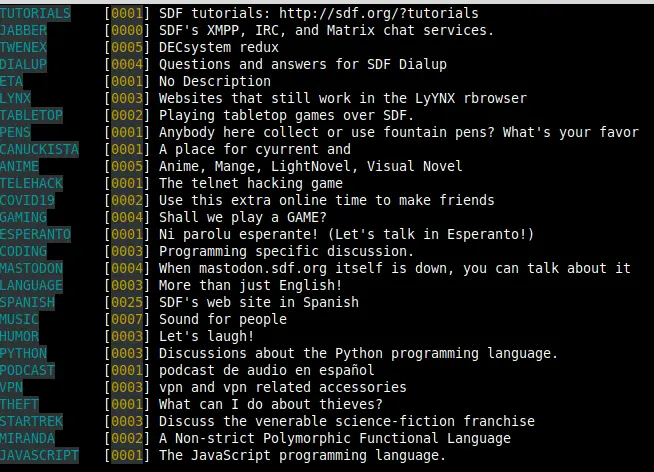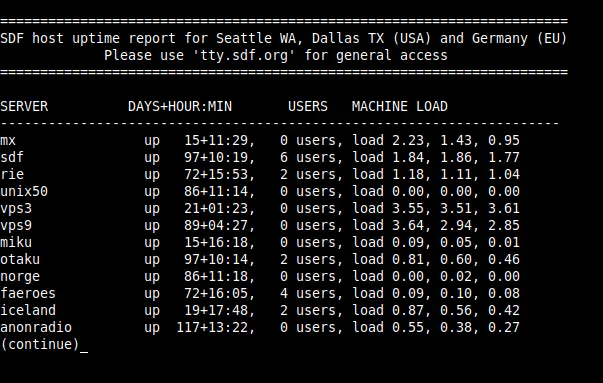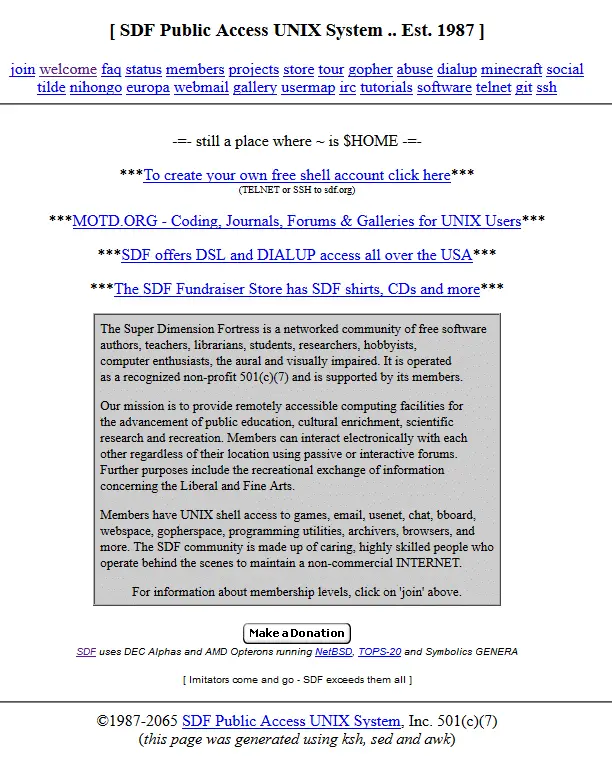Introduction:
In the early days of the internet, long before the seamless browsing experiences we enjoy today, there existed a realm of digital exploration that laid the foundation for the interconnected world we now take for granted. This journey takes us back to the era of Bulletin Board Systems (BBS) and Unix, when the internet was a vastly different landscape, filled with a sense of community and discovery.
The Bulletin Board System (BBS) Era:
During the 1980s and early 1990s, the primary means of online interaction was through Bulletin Board Systems. These were essentially digital meeting places where users could dial in via modems to connect to a host computer, creating a space for communication, file sharing, and online games. BBSes were the social hubs of the time, offering forums, message boards, and multiplayer games that fuelled the sense of online community.
If you would still like to experience this, then visit TheOldNet and SDF. It is truly nostalgic to see BBS interfaces and using them.

The distinctive sound of a modem handshake followed by the command-line interface welcomed users into a world that was novel and exciting. Unlike today’s graphical interfaces, BBSes operated in text mode, requiring users to navigate through menus using keyboard commands. The limited graphics and slow data transfer rates didn’t deter enthusiasts who were hungry for the virtual camaraderie and exchange of ideas.

Unix: The Operating System Powering the Internet’s Backbone:
While BBSes created local online communities, the backbone of the internet was being shaped by Unix, an operating system born in the late 1960s. Unix provided a robust and scalable foundation for networking, laying the groundwork for the internet as we know it today.

Unix’s command-line interface was the language of the early internet, allowing users to communicate with servers and perform tasks through text commands. It was a world where mastery of Unix commands like ls, cd, and grep was a badge of honor for digital pioneers. The Unix philosophy of small, modular programs working together seamlessly became a guiding principle for the development of the internet’s infrastructure.
The Birth of Email and Usenet:
As the BBS and Unix worlds converged, new forms of online communication emerged. Email became a revolutionary tool, allowing users to send messages across the globe through interconnected servers. Usenet, a distributed discussion system, introduced a decentralized approach to online forums, where users could engage in conversations organized by topic in a hierarchical structure.
These developments marked the beginning of a more interconnected and collaborative online experience, where the seeds of the modern internet were being sown.
Conclusion:
The journey back to the era of BBS and Unix is a reminder of the humble beginnings of the internet. The sense of exploration, community, and the thrill of connecting with others in a purely text-based environment are the cornerstones of a digital landscape that has evolved into the sophisticated internet we navigate today.
While the BBS and Unix era may seem archaic in comparison to the sleek interfaces and high-speed connections we enjoy today, it laid the groundwork for the digital revolution that transformed the world. Nostalgia for these simpler times serves as a testament to the innovative spirit that fuelled the early internet pioneers and their vision for a connected world.